Wibongsa Temple - Wanju (위봉사 (완주))
15.0Km 2024-04-07
53, Wibong-gil, Wanju-gun, Jeonbuk-do
+82-63-243-7657
Wibongsa Temple is located past Mujigaemun Gate (Rainbow Gate) and Wibong Village and is a major temple in the Honam region that once oversaw 52 branch temples. Said to be built by Monk Seoam in 604 (the 5th year of King Mu of Baekje), the surviving buildings date back to the Joseon Era. Today, only Bogwangmyeongjeon Hall (Treasure No. 608), Yosa (Provincial Cultural Asset No. 698), and Samseonggak remain. The Baeguigwaneumbosal wall painting in particular is the pride of the temple.
Maisan Hwaeomgul Cave (마이산 화엄굴)
15.2Km 2025-01-10
367, Maisannam-ro, Jinan-gun, Jeonbuk-do
+82-63-430-8751
Maisan Mountain has two major peaks made of sedimentary rocks; these peaks are said to be ‘couple peaks’ and cannot be found anywhere else. Sut Maibong (alt. 667 meters) is said to be the male peak while the slightly larger Am Maibong (alt. 673 meters) is deemed the female peak. In the early Joseon period the mountain was named ‘Sokgeumsan,’ but began to be called ‘Maisan’ after the 12th year of King Taejong, who commented that the two peaks resembled horse ears (‘maisan’ meaning ‘horse ears’). All along Maisan Mountain, visitors will find small crater-like rock cavities that are formed by prolonged weathering. These unique geological features, called ‘tafoni,’ are of great academic value.
Inside Hwaeomgul Cave, visitors can observe medicinal water that flows up from underground all throughout the year. It is widely believed that once you drink the water, especially on the days of the Spring and Autumn Equinox, you will soon have a son and be blessed by the mountain spirit. Even today, many women who have difficulty conceiving visit the mountain to pray to the mountain spirits for their heart’s desire—the gift of a child. The region in which Maisan is located is the birthplace of many talented people and national heroes, which some say is proof of the blessings of the mountain and its extremely powerful spirit.
Maisan Mountain Tafoni Terrain (마이산 타포니지형)
15.2Km 2024-04-07
255 Maisan-ro, Jinan-eup, Jinan-gun, Jeonbuk-do
Tafoni terrain refer to clusters of small caves resembling bombarded peaks. On the southern slope of Ammaibong Peak in Maisan Mountain, various-shaped honeycomb caves are widely spread out. These formations are believed to have been formed during the 4th Ice Age and subsequently shaped by frost action. Such caves are commonly found along coastlines.
Eunsusa Temple (은수사)
15.2Km 2024-04-07
406, Maisannam-ro, Jinan-gun, Jeonbuk-do
+82-63-433-2502
The temple located upon Maisan Mountain was called Sangwonsa Temple during the early Joseon dynasty and was later known as Jeongmyeongam Hermitage. According to the Korean Language Society, the temple began to be called Eunsusa (meaning ‘Silver Water Temple’) after King Taejo (the founder of the Joseon dynasty) visited the temple and remarked that the water flowing nearby was as clean and smooth as pure silver.
The temple is home to the largest known Beopgo (Buddhist drum used for rituals), which was produced in 1982. A stone sculpture and a statue of Granny Samsin (a goddess that looks after babies’ births and keeps them healthy) also stand at the temple. However, the temple’s most treasured assets are its two Natural Monuments: Emerald Gaiety (a climbing vine, Natural Monument No. 380) and the Cheongsil Pear Tree (Natural Monument No. 386). Reverse icicles, though found all over the mountainsides, are most readily and abundantly found in the Eunsusa Temple area.
Wibongsanseong County Park (위봉산성)
15.3Km 2025-10-23
Daeheung-ri, Wanju-gun, Jeonbuk-do
+82-63-240-4224
Wibongsanseong County Park is located north of Jeonju, past Songgwangsa Temple through a tunnel of cherry trees. The park has some noteworthy sightseeing attractions such as Wibongpokpo Falls, Wibongsa Temple, and Dongsang Reservoir. Winbongsanseong County Park was founded at the site of Winbongsanseong Fortress, which was built under King Sukjong's rule in 1675 as a refuge site to safekeep the portrait of Joeson dynasty's founder King Taejo and the royal family's ancestral tablet in times of war or other national emergency. They are originally enshrined in Gyeonggijeon Shrine and Jogyeongmyo Shrine, and when Jeonju had fallen during the Donghak Peasant Revolution, the portrait and tablet were moved to a small palace inside the fortress. The original fortress walls were 16 kilometers in circumference with three gates in the north, east, and west, but only a half-moon shaped western gate remains standing today.
Dongsang Unjangsangyegok Valley (동상운장산계곡)
15.3Km 2024-04-07
Daea-ri, Dongsang-myeon, Wanju-gun, Jeonbuk-do
Dongsang Unjangsangyegok Valley is a valley located at the easternmost part of Wanju. Spanning approximately 9 kilometers, it combines Dongsanggyegok Valley and Unjangsangyegok Valley. With its picturesque valley and refreshing waterfalls, it attracts visitors from all over the country during the summer months for recreation. In autumn, the colorful foliage further enhances the joy of hiking.
Tapsa Temple (마이산 탑사)
15.3Km 2025-01-08
367, Maisannam-ro, Maryeong-myeon, Jinan-gun, Jeonbuk-do
+82-63-433-0012
Tapsa Temple is famous for its over 80 stone pagodas. Each pagoda has a name, meaning and role. The pagodas are made of natural stone. They range in x_height from 1 meter to 13.5 meters and in shape from conical to straight. Two twin pagodas behind Daeungjeonhall are the tallest, standing three times the x_height of an average adult.
Haneullae Deulkkot Village (하늘내들꽃마을 [녹색농촌체험])
15.8Km 2025-01-08
554, Cheoncheonbung-ro, Jangsu-gun, Jeonbuk-do
+82-63-353-5185
Situated in Jangsu, Jeollabuk-do, Haneullae Deulkkot Village, as the name suggests in Korean, it is a village nestled alongside the Cheoncheon stream (haneullae means ‘heaven creek’). The area is blessed with clear shallow creek, a green mountain and a field of wild flowers (deulkkot). In the small ecological park there is a 1.6 kilometer square building, a playground, a farm, a garden and a pond occupying nearly 10,000 square meters. Next to the grassy playground you’ll find a therapeutic pebble path made for walking on bare foot, towering trees scattered around the playground offering some cool shade and a few swing chairs attached to the tall trees. There are three wooden look-out stations also shaded by the platanus trees. And in a corner of the playground is a campground capable of accommodating up to ten tents. The pond is home to more than ten varieties of water plants, including the lotus and water hyacinth. There are also some colourful native water life, such as the Crucian carp, daces, dark chubs, Chinese minnows, loaches, freshwater snails and marsh snails.
The cafeteria is all made of pine. Visitors can breathe in the soothing woody aroma, take in the view of the park all while having a meal. You can go on hiking trails, rest afterwards with some tea then walk to the local market in a pavilion. Also, people can visit the local compost centre and earthworm breeding farm, as well as the nearby roosters, a protected species native to Korea.
Hongdo Village (홍도마을)
15.9Km 2024-08-28
53-2 Hongdo 1-gil, Namil-myeon, Geumsan-gun, Chungcheongnam-do
Hongdo Village in Geumsan has long been famous for having many peach trees. These days, the village is also known for the abundance of ginseng and medicinal herbs grown here. The village hosts a festival every April which sees many tourists flock to the village. Nearby attractions include Sibipokpo Falls, Jinaksan Mountain, and a famous driving course by Yongdam Dam.
Oseongje Reservoir (오성제 저수지)
16.0Km 2025-10-27
Daeheung-ri, Soyang-myeon, Wanju-gun, Jeollabuk-do
Oseongje Reservoir provides a natural rest area for locals with a waterside path. Located nearby is a gallery and photo spot. The area quickly became a must-visit attraction after featuring in BTS' 2019 Summer Package.
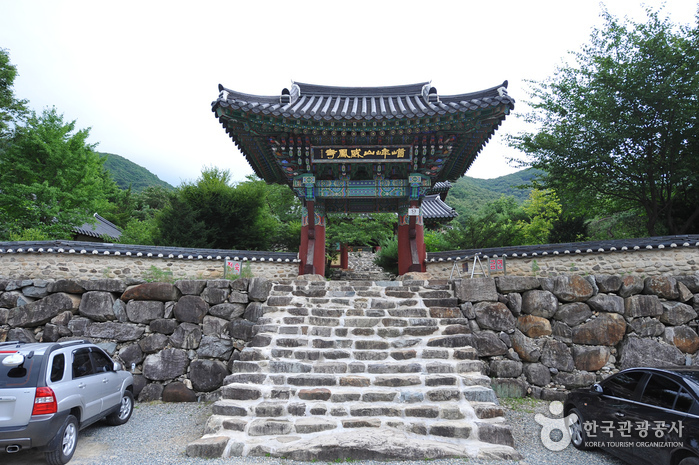
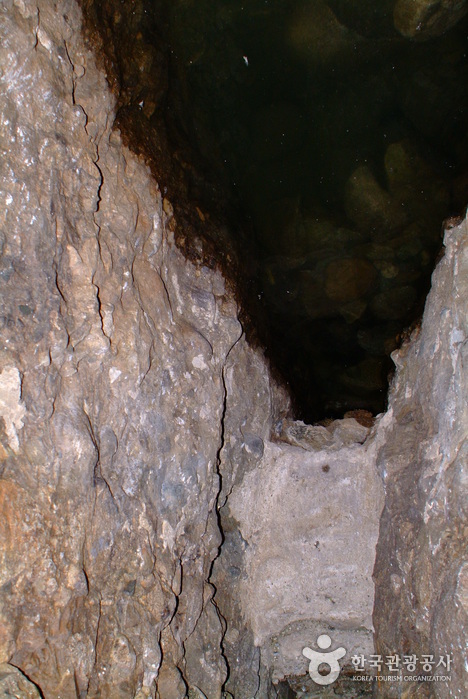
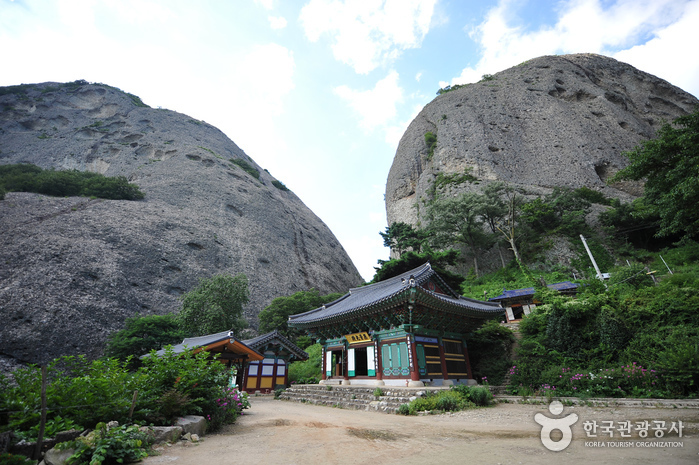
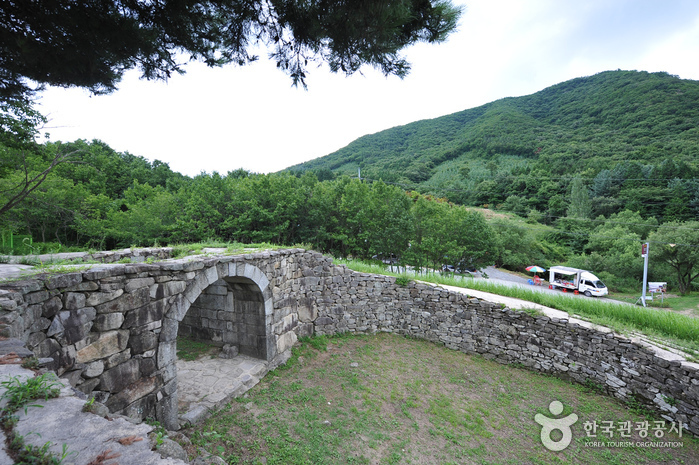
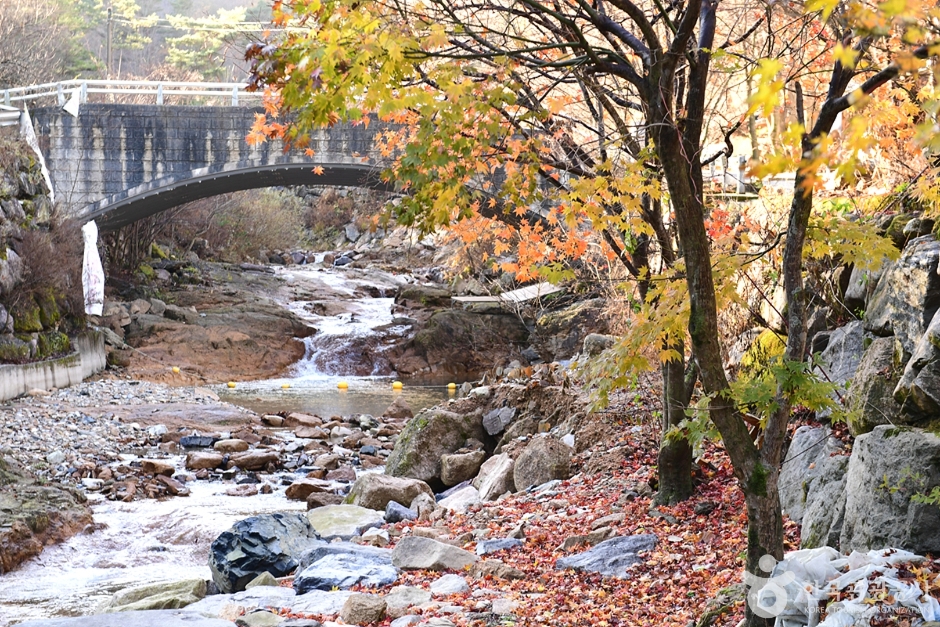
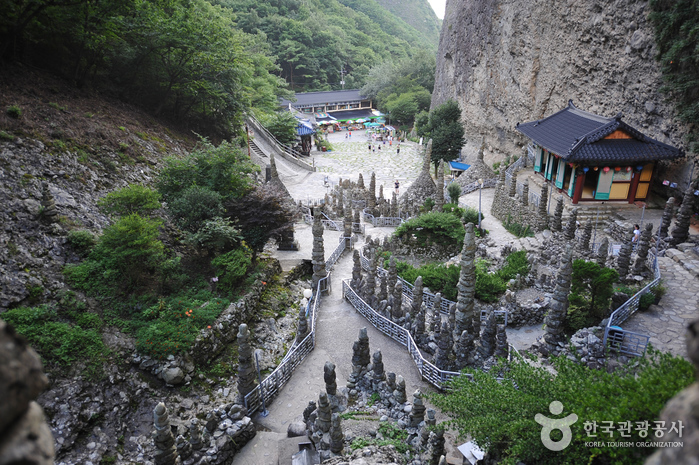
![Haneullae Deulkkot Village (하늘내들꽃마을 [녹색농촌체험])](http://tong.visitkorea.or.kr/cms/resource/19/2515519_image2_1.jpg)

 English
English
 한국어
한국어 日本語
日本語 中文(简体)
中文(简体) Deutsch
Deutsch Français
Français Español
Español Русский
Русский